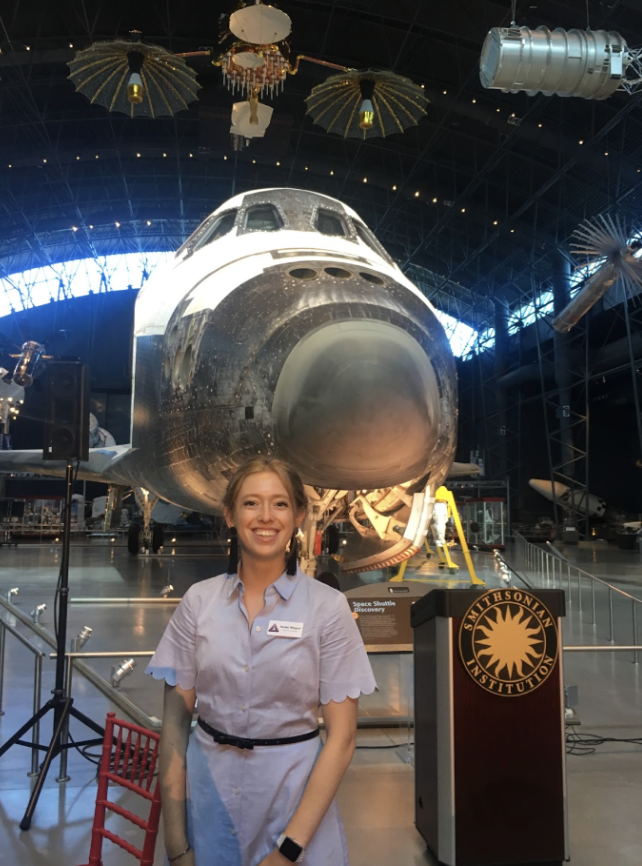STEM (Science, Technology, Engineering, Math)

Email:
huner_bourjaily@dpsk12.net
Department(s):
Specials
2024-2025 School Year
Bio
Hunter Bourjaily is currently the Teacher Professional Development Fellow at the National Air and Space Museum in Washington, D.C. She works with the education department to plan and facilitate STEM-focused professional development (PD) sessions. Her fellowship will culminate with the three-week long Teacher Innovator Institute (TII) during which educators from across the country travel to DC to learn the latest in STEM education. Hunter participated in TII in 2019-2022 before transitioning into the fellowship role.
When not working in Washington, D.C. Hunter teaches at Palmer Elementary School. She started her career there as a 4th/5th grade teacher, then the 5th grade teacher, and finally the Senior Team Lead/interventionist. While at Palmer, Hunter shared her love of STEM with students and colleagues by integrating projects and technology into her classroom.
If you catch Hunter away from work, you will find her with her husband, John, or her cat, Vichy. She loves spending time outdoors and exploring the varied Colorado and Virginia ecosystems. She recently graduated the Denver Audubon Community Naturalist course and has reignited her love of crafting and sewing. She is excited to return to Palmer to grow the STEM program by leveraging what she learned during her fellowship.
Vision
To seamlessly integrate STEM content and skills into all classrooms, in order to grow students’ knowledge, confidence, and abilities.
My vision for STEM at Palmer is to build a program that is collaborative in nature and fully integrated into the academic culture of the school. As the STEM teacher, I would work with my colleagues to identify and plan for opportunities to weave STEM into their classroom content. Ideally, STEM instruction would be two-fold. One “workshop” style session a week for each class during which they would come to the STEM lab to learn how to use specific technology or skills. The second session would be push-in lessons in the classroom to apply what students learned during the workshop. The in-class portion would be planned and co-taught with teachers to support the content they are already teaching.
Designing the STEM program not as a stand-alone special, but as an integrated workshop will support students’ transference of knowledge. They will build critical thinking and problem solving skills that will be automatically applied to their classroom content.